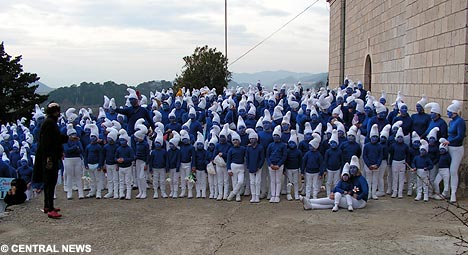Need an illustration of the consequences of using inaccurate information from the internet? Look no further than Croatia. Apparently, almost 400 Croatians gathered to beat an American record for “most Smurfs gathered together at one time.” Unfortunately, the organizer, who checked for the previous record-holders with a web search, missed the fact that a group of students at Warwick University had already broken the American record–oh, and theirs, as well. “But, Jim,” you challenge, “I thought everything on the internet is true!?” Not so, my friends. Not so.
via NPR


Can’t they just wash their faces and invert their hats and break the record for Gargamels?